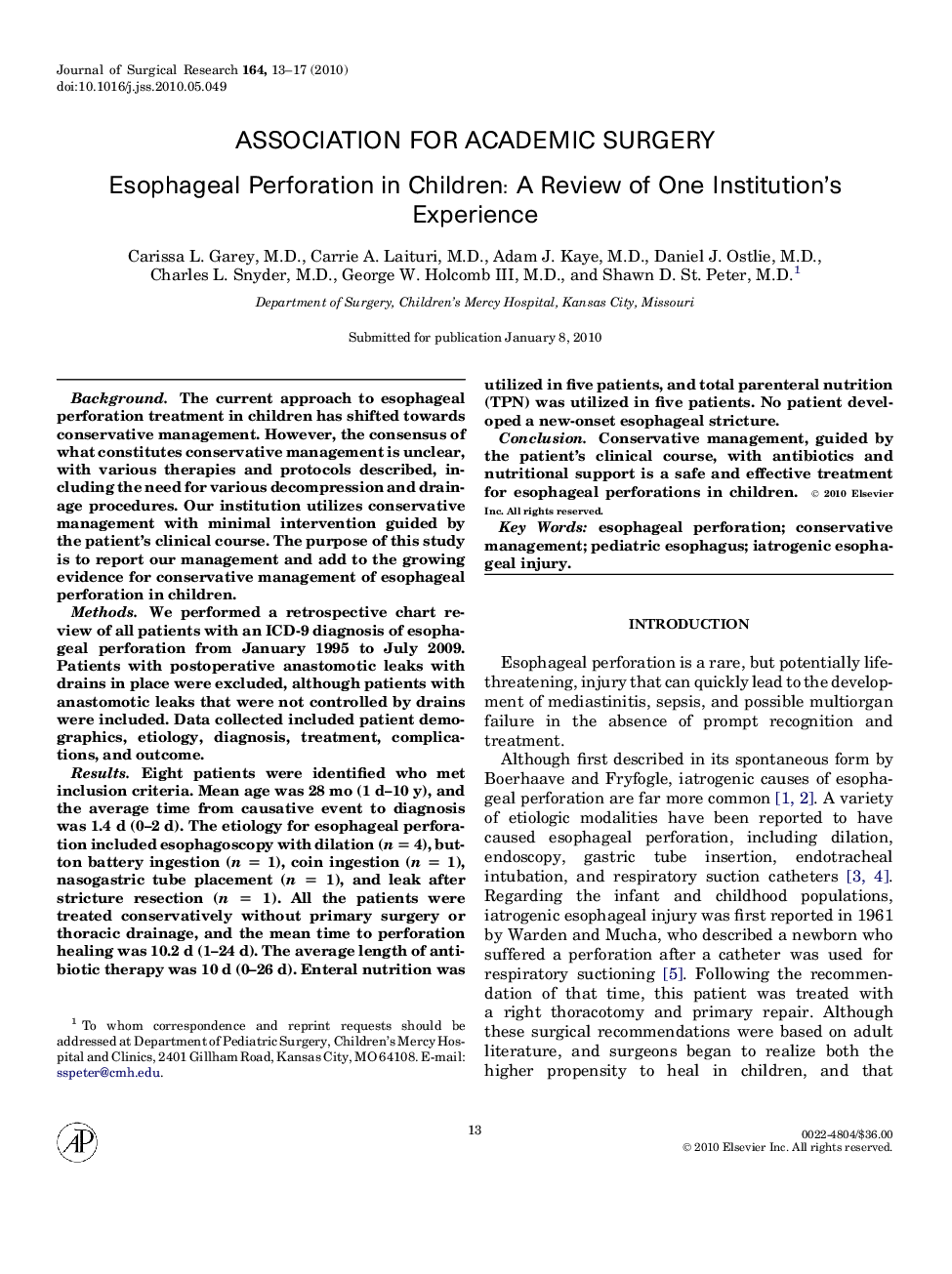| کد مقاله | کد نشریه | سال انتشار | مقاله انگلیسی | نسخه تمام متن |
|---|---|---|---|---|
| 4302583 | 1288459 | 2010 | 5 صفحه PDF | دانلود رایگان |

BackgroundThe current approach to esophageal perforation treatment in children has shifted towards conservative management. However, the consensus of what constitutes conservative management is unclear, with various therapies and protocols described, including the need for various decompression and drainage procedures. Our institution utilizes conservative management with minimal intervention guided by the patient's clinical course. The purpose of this study is to report our management and add to the growing evidence for conservative management of esophageal perforation in children.MethodsWe performed a retrospective chart review of all patients with an ICD-9 diagnosis of esophageal perforation from January 1995 to July 2009. Patients with postoperative anastomotic leaks with drains in place were excluded, although patients with anastomotic leaks that were not controlled by drains were included. Data collected included patient demographics, etiology, diagnosis, treatment, complications, and outcome.ResultsEight patients were identified who met inclusion criteria. Mean age was 28 mo (1 d–10 y), and the average time from causative event to diagnosis was 1.4 d (0–2 d). The etiology for esophageal perforation included esophagoscopy with dilation (n = 4), button battery ingestion (n = 1), coin ingestion (n = 1), nasogastric tube placement (n = 1), and leak after stricture resection (n = 1). All the patients were treated conservatively without primary surgery or thoracic drainage, and the mean time to perforation healing was 10.2 d (1–24 d). The average length of antibiotic therapy was 10 d (0–26 d). Enteral nutrition was utilized in five patients, and total parenteral nutrition (TPN) was utilized in five patients. No patient developed a new-onset esophageal stricture.ConclusionConservative management, guided by the patient's clinical course, with antibiotics and nutritional support is a safe and effective treatment for esophageal perforations in children.
Journal: Journal of Surgical Research - Volume 164, Issue 1, November 2010, Pages 13–17